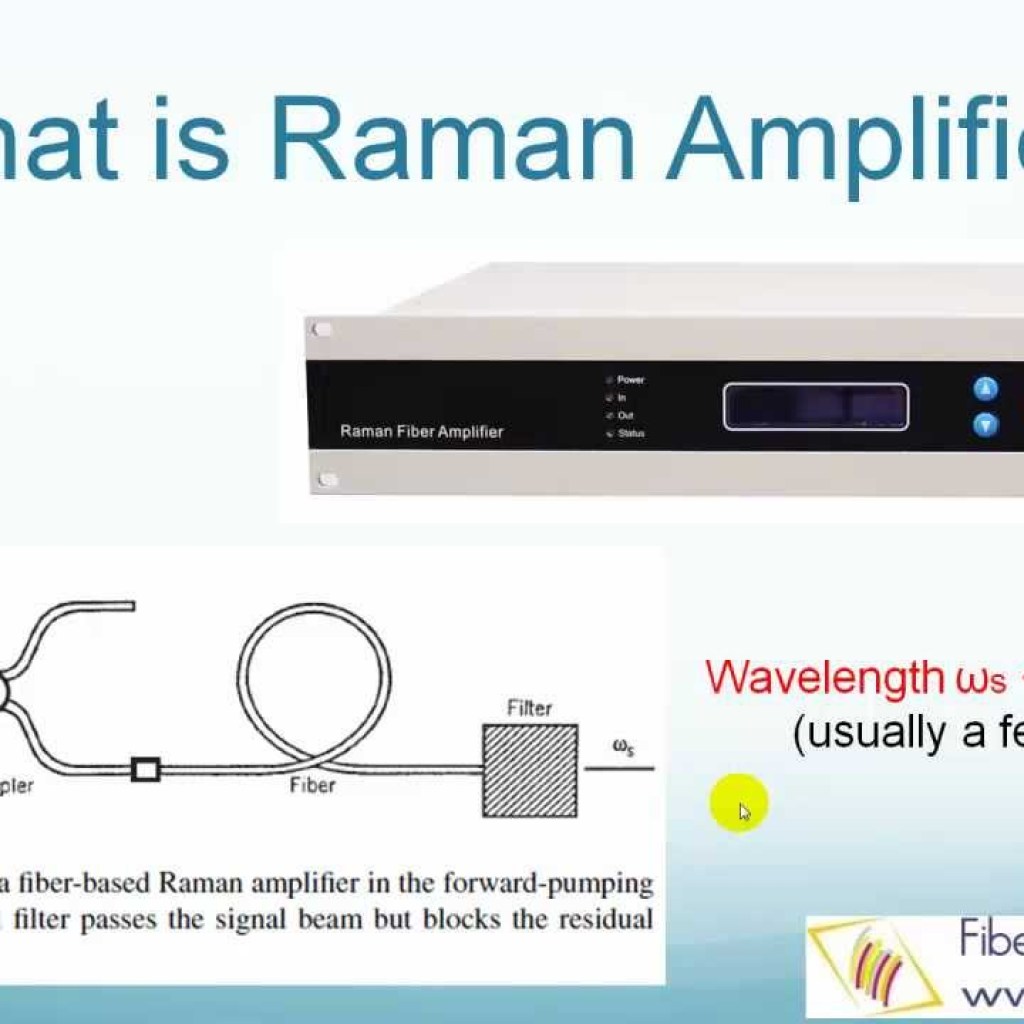Contents

Source: YouTube
Understanding Raman Amplifiers in Optical Communications
Introduction to Raman Amplifiers
In the realm of optical communications, Raman amplifiers play a crucial role in enhancing signal strength. These devices utilize the principle of stimulated Raman scattering to amplify optical signals. Typically, the Raman gain medium comprises optical fibers, bulk crystals, waveguides in photonic integrated circuits, or cells filled with gas or liquid.
Operating Principle
Raman amplifiers function by using a pump beam that co-propagates or counter-propagates with the input signal. The pump wavelength is slightly shorter than the signal wavelength, usually by a few tens of nanometers. In silica fibers, optimal gain is achieved when there is a frequency offset of approximately 10–15 THz between the pump and the signal, contingent on the fiber core’s composition.
Features of Raman Amplifiers
Wavelength Flexibility
Raman amplifiers are versatile, capable of operating across various wavelength regions as long as suitable pump sources are available. This flexibility allows for tailored gain spectra by deploying multiple pump wavelengths simultaneously, facilitating broadband amplification beyond what erbium-doped fiber amplifiers (EDFAs) can offer.
High Pump Power Requirement
These amplifiers necessitate high pump power, often around 1 watt, which may pose laser safety concerns. The pump sources are typically multiple laser diodes or fiber lasers, providing the necessary high brightness.
Fiber Length and Noise Characteristics
Raman amplifiers require extensive fiber lengths, often spanning several kilometers. However, the transmission fiber in telecom systems can serve this purpose, eliminating the need for additional fiber. These amplifiers exhibit a lower noise figure, though they can more directly couple pump noise to the signal compared to laser amplifiers.
Response to Pump Power Changes
Raman amplifiers react swiftly to changes in pump power, especially in co-propagating configurations. They also display unique saturation characteristics compared to other amplifiers.
Polarization-Dependent Gain
When the pump wavelength is polarized, the Raman gain becomes polarization-dependent, an often undesirable effect. This can be mitigated using polarization-coupled pump diodes or a pump depolarizer.
Applications and Advancements
Telecom Applications
In telecommunications, Raman amplifiers are typically pumped using continuous-wave light from diode lasers. They are also effective for amplifying ultrashort pulses, although group velocity mismatch can limit interaction lengths for pulse durations under one picosecond.
Specialized Fiber Utilization
While ordinary single-mode fibers can be employed, specialized fibers with enhanced Raman gain, achieved through certain dopants or reduced mode areas, are often used in lumped Raman amplifiers. These configurations allow for significant amplification within shorter fiber lengths.
Innovations in Fiber Technology
Recent advancements include the use of phosphorous-doped fibers, which offer increased Raman shift or gain peaks with low Raman shifts. These innovations continue to expand the capabilities and applications of Raman amplifiers in optical communication systems.
Conclusion
Raman amplifiers are indispensable in modern optical communication systems due to their flexibility, high power capabilities, and adaptability to various wavelength regions. As technology advances, these amplifiers will continue to evolve, offering even greater efficiency and performance in the ever-expanding field of photonics.

Source: YouTube
Feel free to comment your thoughts.



